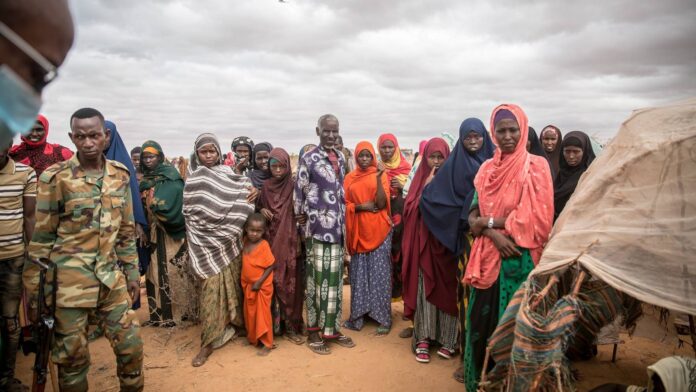Severe and prolonged drought, combined with a drastic rise in food prices and ongoing conflict, is putting hundreds of thousands of people in “catastrophic” levels of food insecurity in Somalia, as the risk of famine rises.
An alert from the US-based Famine Early Warning Systems Network (FEWS NET) this week said the drought in Somalia continues to be “exceptionally severe”, and more than 200,000 people are likely to experience what are effectively famine levels of food insecurity, while more than 7 million are likely to need food aid for the next year.
The current “gu” rains, supposed to last from April to June, have been up to 70 per cent below average. Close to 1 million people have been displaced looking for aid, while hundreds of thousands of animals have died from hunger and thirst, wiping out livelihoods for many of Somalia’s pastoralists who rely on their animals for survival.
Predictions suggest that a fifth consecutive rainy season — which usually happens between October and December — may fail later this year, causing a “record-breaking five-season drought”.
The network said the severity of drought conditions now mirrors the conditions of the famine in 2011, when one quarter of a million people died from starvation.
Kenya and Ethiopia are also badly affected by the drought. In Ethiopia, up to 6.5 million people in the south and southeast are said to be in need of food assistance. Last week, FEWS NET said an estimated 2.5 million livestock in that area of Ethiopia died between late 2021 and mid-May 2022. The situation is compounded by the ongoing conflict in northern Ethiopia, which has “significantly damaged livelihoods” while a “de facto humanitarian and commercial blockade persists”, FEWS NET said. Last year, at least 400,000 people in northern Ethiopia were living in “famine-like conditions”, according to the UN.
About 3.5 million Kenyans in the country’s north and east are also acutely food insecure because of drought, according to the country’s National Drought Management Authority, while about 1.5 million livestock are estimated to have died. The latest UN Intergovernmental Panel on Climate Change (IPCC) report said since 2005, the frequency of drought in east Africa has doubled from one in every six years to one in three.
Somalia is said to be one of the most vulnerable countries to climate change in the world.
Large swathes of territory in south-central Somalia are controlled by Islamic militant group al-Shabaab, and escapees have told The Irish Times that militants were taking control of the still-functioning water points. Fighting over access to water and vegetation where animals can graze has also led to increased conflict, they said.
East Africa — like most of the continent — has seen a drastic increase in the cost of food and fuel, partially as a result of the conflict in Ukraine. By April, FEWS NET said, the cost of staple cereal and cooking oil in Somalia had risen by as much as 160 per cent above normal prices, making them out of reach of many Somalis.
Source: Irish Times






